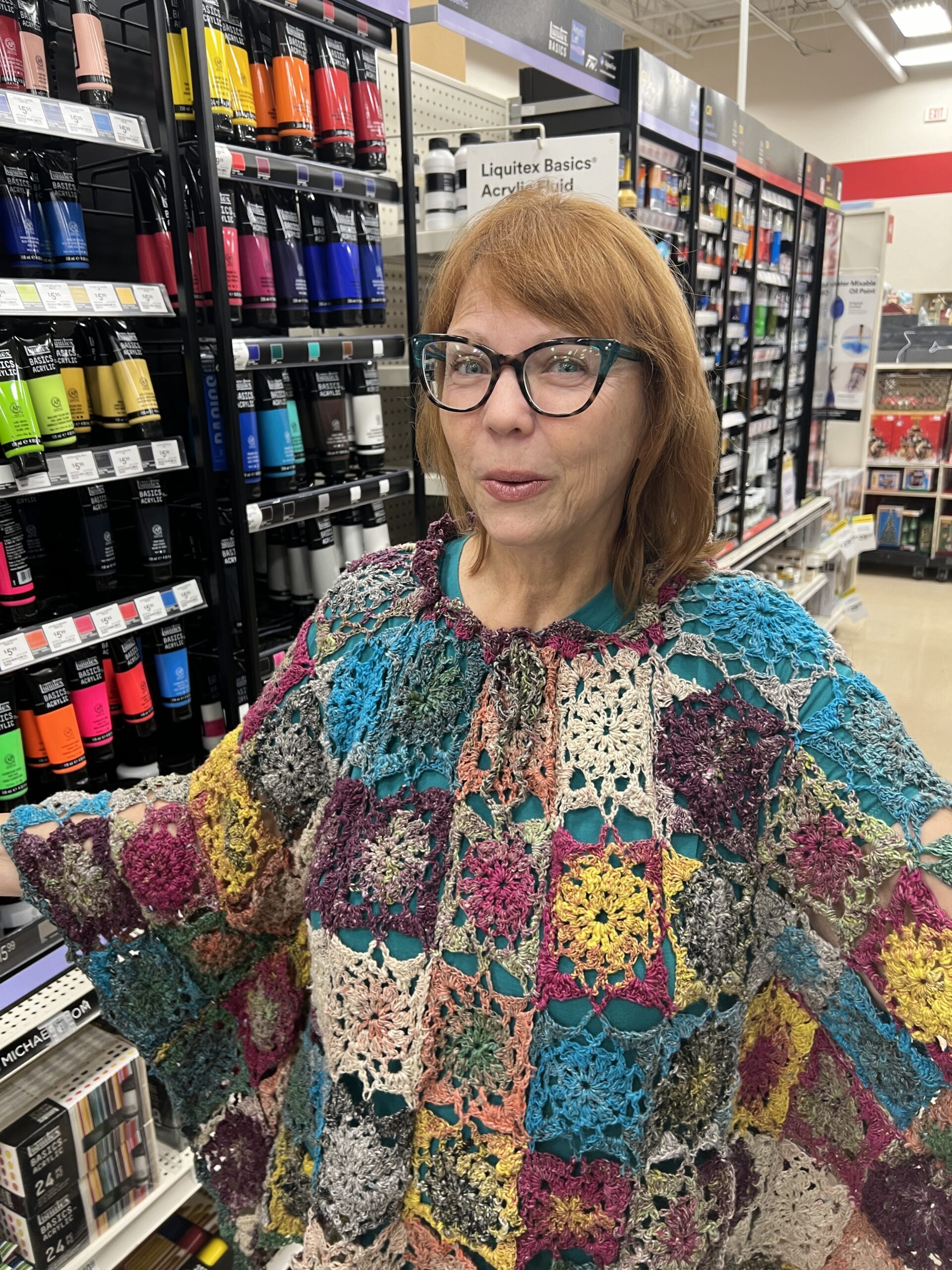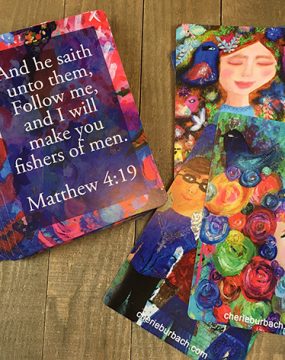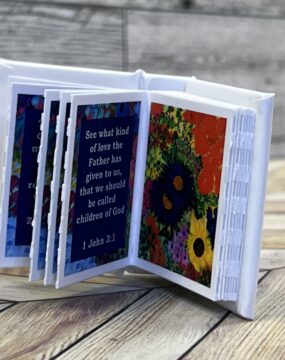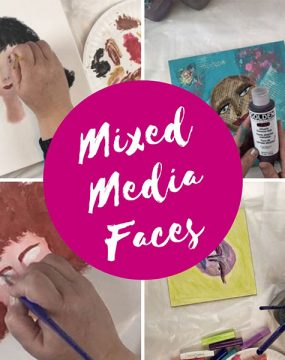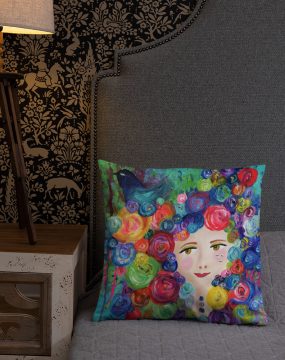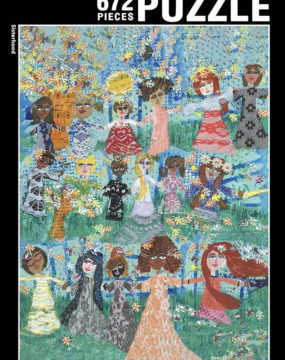I work on all different sizes of canvases, but I enjoy working big. There is a different kind of freedom that comes from having that large space to fill up. It’s like your whole body gets involved in painting, rather than when you’re working small and need to keep things more contained.
I got this large (36×36 inch) canvas and right away realized it was too large to put on my studio table. So the dining room table it is! We covered our table and I’m going to try and be really careful about spilling paint.
Ahem….
Recently I taught a class where someone asked me where my gelli plates were, and I honestly didn’t know what she was talking about. I had never heard of them. I think artists need to do their own thing with their art, of course, but there are some mixed media artists that use stencils or pre-made products to start or even finish a painting. And guess what? Unless you’re totally transforming those products, all you’re doing is scrapbooking then. You’re not painting and certainly not creating new art.
What does this matter? I guess since I represent mixed media art, I hear the feedback that some art buyers and shops give when I first pitch them about carrying my art. Some of them have a perception that mixed media is all about essentially taking someone else’s art and not really creating something new and unique yourself.
I tend not to use any of the pre-made stuff, like Tim Holtz or Heidi Swapp not because their products aren’t wonderful (they are!) but because I would not know how to make them my own. You know? And this is important. I could do a whole post (or a book?) on being creatively original but this post is about is large painting I’m doing, and since people ask me all the time how I start paintings I thought I’d document this one.
First, when I look at a large canvas like this, I get excited. All this space! Happiness…
This is how it begins sometimes, with words of intention and colors I like. They will get painted over with layers and texture, but I like knowing they’re there.
After that I start working on the backgrounds, adding texture and color. For this painting, I used a variety of acrylics and texture tools like bottles and rug backing and the edge of an old credit card. I added paper to the top and layers of darker purply blues to create a night sky. Then, I started thinking about my tree girls, and placing them in. I had sketched out a mother and child picture of these before and knew exactly how I wanted them placed.
I did the beginning shading for the faces and heads.
So far for this picture, I’ve used acrylics, oil sticks, paper, and now, Indian inks. I love how they add texture to the roots and the “hair” of these tree girls. I also begin to “sketch” in the dresses and eyes. I do this usually with acrylics, defining the space by painting it. I’m not one to sketch out things on a canvas with pencil or anything like that. I like to work on the painting as much as possible, including color mixing. In the corner, you can see the sketch I did for this picture.
More inks, more acrylics, more definition. These beginning stages are not always my favorite because I just want to get in there and finish. I work in bursts, putting color and texture down and then allowing it all to dry, stepping back and deciding how I want to proceed.
I add details in these stages that won’t get seen unless you’re up close to the painting. But that is what I like. I enjoy knowing that someone can view my paintings from far away and as they get closer and closer they see more things in it. This message is tucked in one of the girl’s dresses.
When I finished the painting, I hung it up in my studio.
Sometimes I need to sit with my paintings a while to see if they will stay with me or were meant to be owned by someone else. I have a feeling this one will end up in someone else’s home at some point, but for now, it watches over me while I paint.







